Give Your Chilli Plants These Perfect Conditions For A Bumper Yield

FRUIT > CHILLIES
Reviewed By COLIN SKELLY

Colin is a Horticulturist and Horticultural Consultant with experience in a range of practical and managerial roles across heritage, commercial and public horticulture. He holds the Royal Horticultural Society’s Master of Horticulture award and has a particular interest in horticultural ecology and naturalistic planting for habitat and climate resilience.
IN THIS GUIDE
CHILLI GUIDES
Passionately liked nearly the world over, one or another type of chilli is an essential ingredient for the respective cuisines of nations as disparate as Mexico, Thailand, India and Italy.
Chillies are best known – and rightfully so – as a hot and spicy food.
However, the hotness of different chilli varieties covers an incredibly wide range. Furthermore, chillies also have width and depth in flavour.
No, it’s not just fire-breathing types or entrants in chilli-eating contests who are fond of chillies and would like to grow these tasty little things.

Of course, chillies are primarily a spice and produce a ‘hot’ sensation but this heat has an exceptionally wide range from tickling and teasing all the way to painful and injurious, but there’s also a taste component.
Different chillies also have varying dryness or moistness.
Not to forget that different chilli varieties not only have different tastes but often have distinctly different scents and ‘finishes’ or aftertastes.
Overview
| Botanical Name | Capsicum |
| Common Name(s) | Chillies |
| Plant Type | Fruit |
| Native Area | Central & South America |
| Hardiness Rating | H1C |
| Foliage | Evergreen |
| Flowers | Flowers followed by edible peppers |
| When To Sow (Indoors) | February, March, April |
| Plant Out | June |
Sunlight
Preferred
Full Sun
Exposure
Sheltered
Size
Height
Varies
Spread
Varies
Bloom Time
Summer
Soil
Preferred
Most Soil Types
Moisture
Moist but well drained
pH
Any
It is worth noting that the genus name ‘Capsicum’ is often used as a synonym for mild bell peppers which are actually a type of Capsicum annuum.1Pepper, bell. (n.d.). Plant Village. Retrieved March 14, 2023, from https://plantvillage.psu.edu/topics/pepper-bell/infos
Bell peppers are somewhat challenging to grow, especially for hobbyists.
The good news is that chillies are quite easy to grow, and, as a general rule, the smaller the chilli, the easier it is to grow.

In this article we focus on ‘Chillies Proper’ – the hot stuff – and not on Bell Peppers.
Chilli plants in their native Tropical and Sub-Tropical Zone habitats are perennials.
In temperate and cool regions they are usually grown as annuals and – unfortunately – even treated and viewed as such.
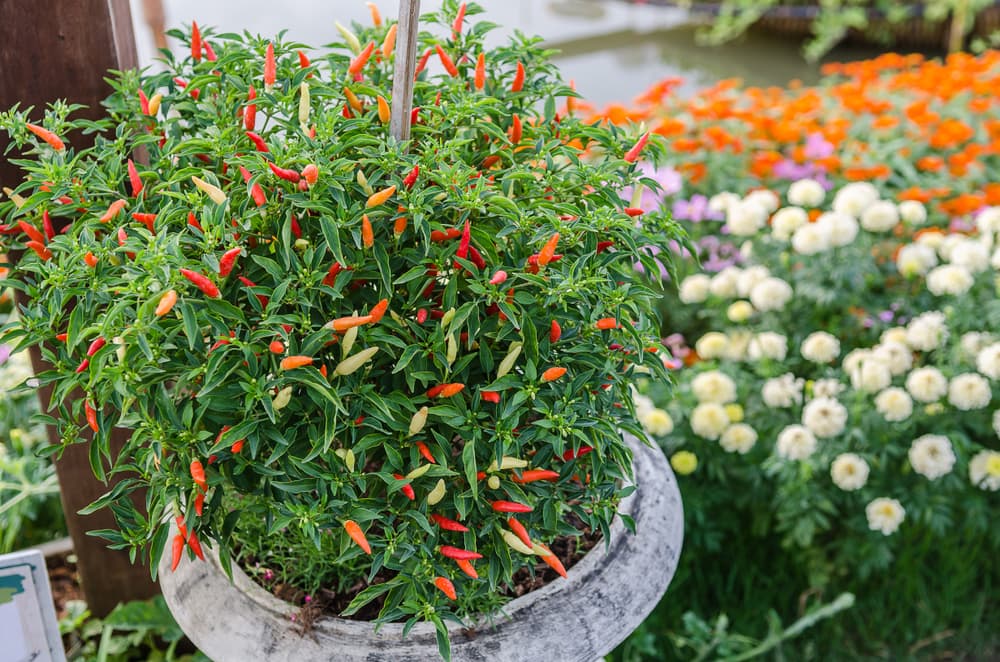
Remember that, as a general rule, the quicker a chilli is picked, the less spicy it is and the less developed its flavour; the more it matures on the vine and the later it is harvested, the hotter it becomes and the greater its nuances and depths of flavour.
Different varieties have different ‘ranges of maturity’ so to speak.
Habitat & Growing Conditions
Soil Requirements
Chillies grow best in a loam mix with a fair amount of organic compost and manure but little clay.
Soil pH should hover right around Slightly Acidic.
Preferred Aspect & Temperature
They are not winter-hardy at all, being indigenous to Tropical and Sub-Tropical climates.
They prefer full sun locations.

In the UK you need to start off chillies in seed pod trays or small pots indoors or in a greenhouse.
Chillies may be kept indoors or in a greenhouse year-round provided they get a lot of sun.
Many chilli varieties can be grown even in growbags.
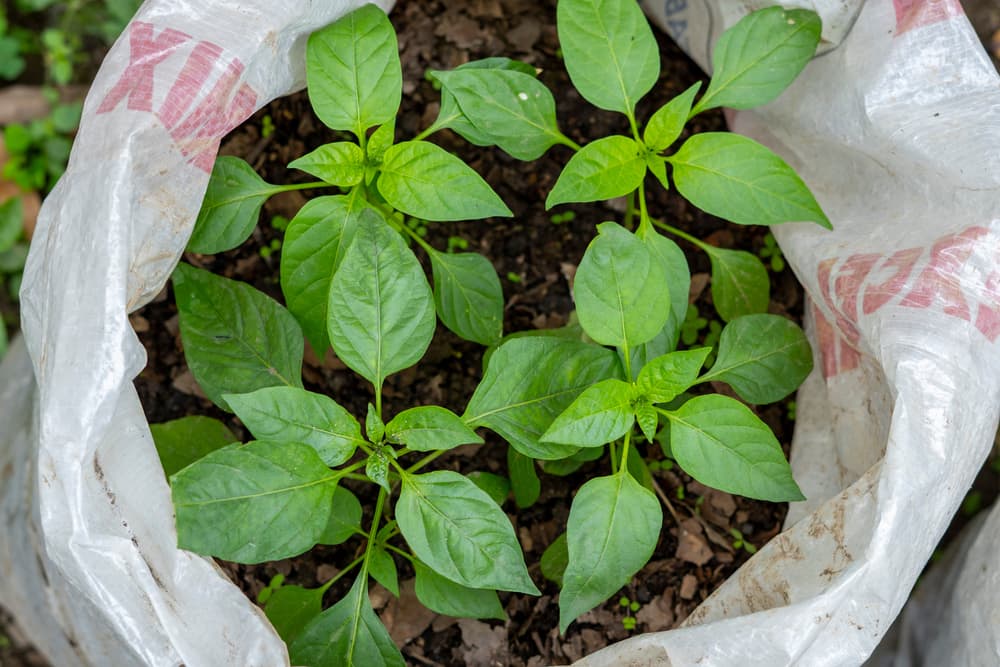
After the plants have developed you would transplant them to suitable containers or in a bed outdoors.
If you grow chilli plants outdoors then they will effectively be annuals but if you grow them in containers, then you can overwinter the plants indoors in a sunny spot or in a heated greenhouse and they will flower and fruit for about three more years.
How To Grow Chillies
Sowing
Sow seeds in preferably February otherwise in March.
You may transplant your growing chillies more than once if you wish.
The rule is to pot on when roots become visible through the drainage hole or when it appears that the root system has filled up the pot.
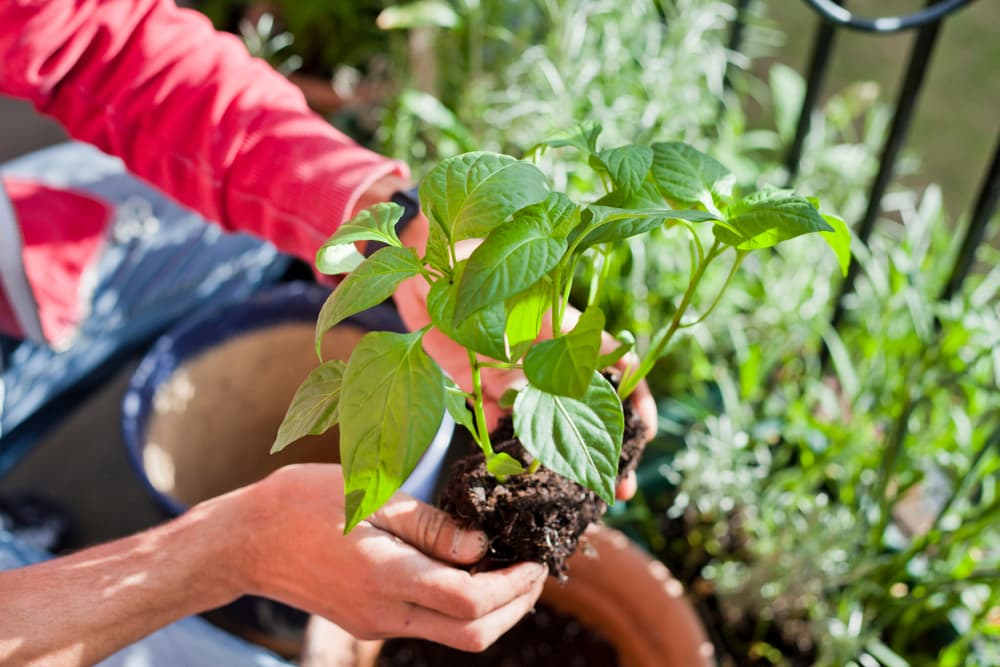
Chilli seeds do not germinate as readily as most vegetables and fruits.
To up the chances of germination, dampen a few paper towel sheets, put seeds in them, rumple the towels, and let them be for a day or two before sowing them.
Prepare small, 6.5cm, terracotta pots with a mix of seeding compost and organic soil without clay or peat.
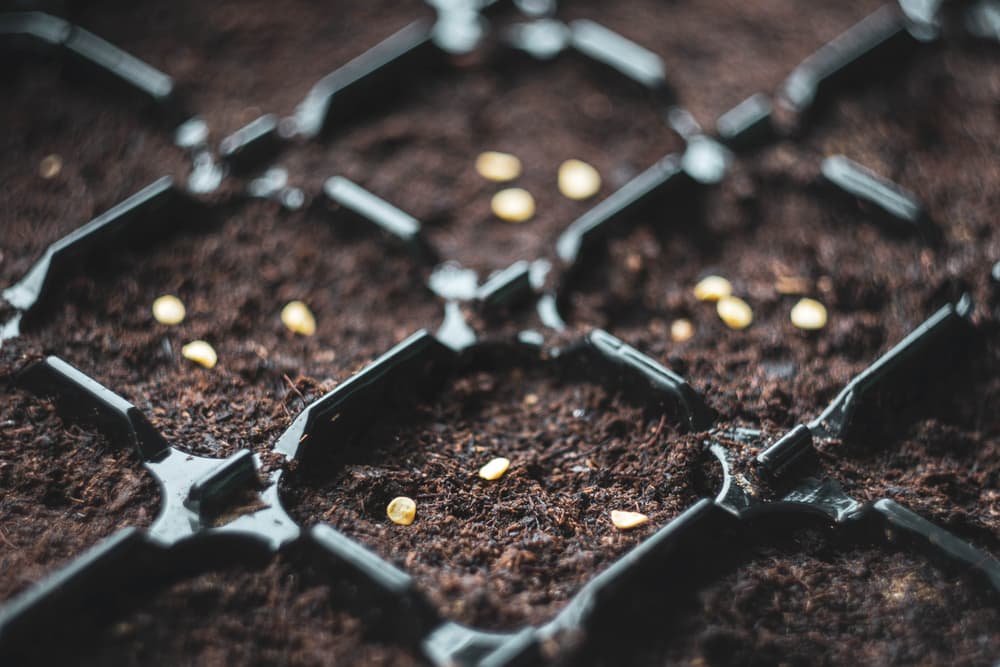
Bring out your seeds wrapped in paper towels – some or many may be starting to germinate.
Place two or three seeds just a touch under the surface of the soil.
Spread a bit of perlite or vermiculite on the surface for absorption and retention of moisture.
The pots can be kept in a heated greenhouse or in a sunny spot indoors at a temperature hovering around 20°C.

Watering & Feeding
Water them every two days so that the soil stays moist though it should not stay wet.
Feed them, sparingly, with a liquid fertiliser like Chilli Focus. Alternatively, feed them, sparingly, with 5-5-5 fertiliser to start off with.
Keep an eye on the plant’s height and overall shape as it grows.
Transplanting
When you feel the plant has reached a desirable height and needs to have more spread, pinch out the tip – the plant will then start becoming bushier.
You will need to transplant the young plants at least once.

Do so when a plant’s roots start peeking through the drainage holes, when the root system has just about filled the pot, or in early-to-mid May.
Prepare 18-20cm pots with a good organic loam including compost but very little clay and no peat.
Transplant one or more developing plants, each to its own pot.
If you decide to transplant the plants in an outdoor bed, do so when the soil temperature is not below 20°C.
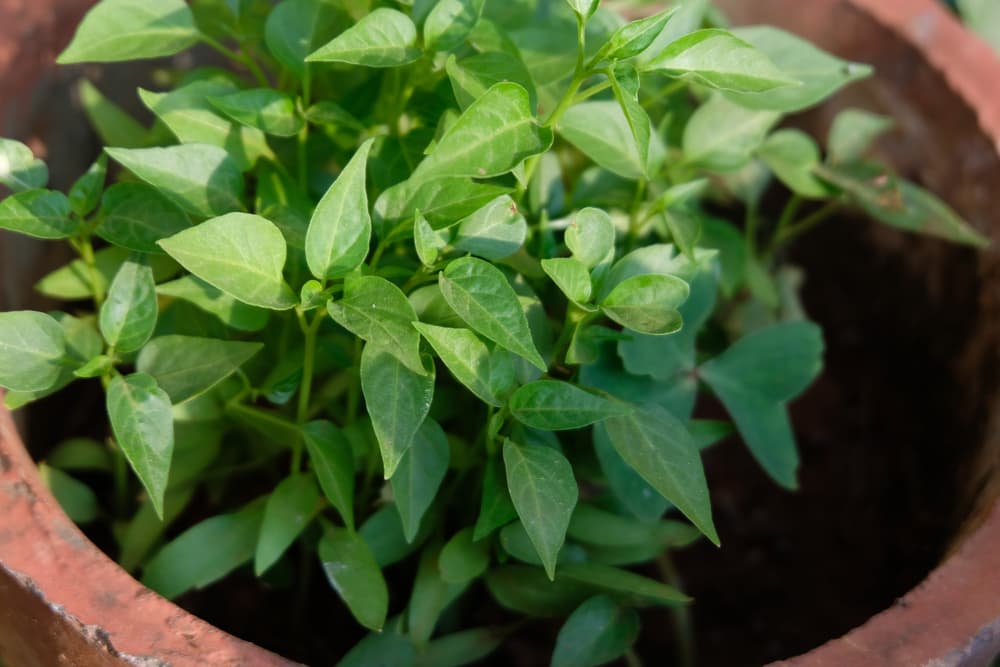
“The UK is a challenging climate for growing chillies outside, as it just gets too wet and cold at times in summer,” says Colin Skelly, a professional gardener who has been awarded the Master Horticulturist status by the RHS.
“I always grow mine in the greenhouse in pots. However, in a south-facing sheltered spot, it might be done in the south of the country.
“To get the soil temperature up prior to planting, use a cloche to trap heat close to the ground.
“This will ensure that the roots of the chillies will have the best chance to establish when transplanted out.”
Stake the developing plants as and when necessary.
Outdoors Growing
In mid-to-end May you can move your chilli plant pots outdoors.

From June, water the plants a little more and continue to feed them.
Be aware that chillies not only exude and give out warmth and heat, chilli plants also take in and need warmth and heat – they dislike cold.
Feed a little more regularly and generously after the plants have flowered and have started to bear fruit.
Common Problems
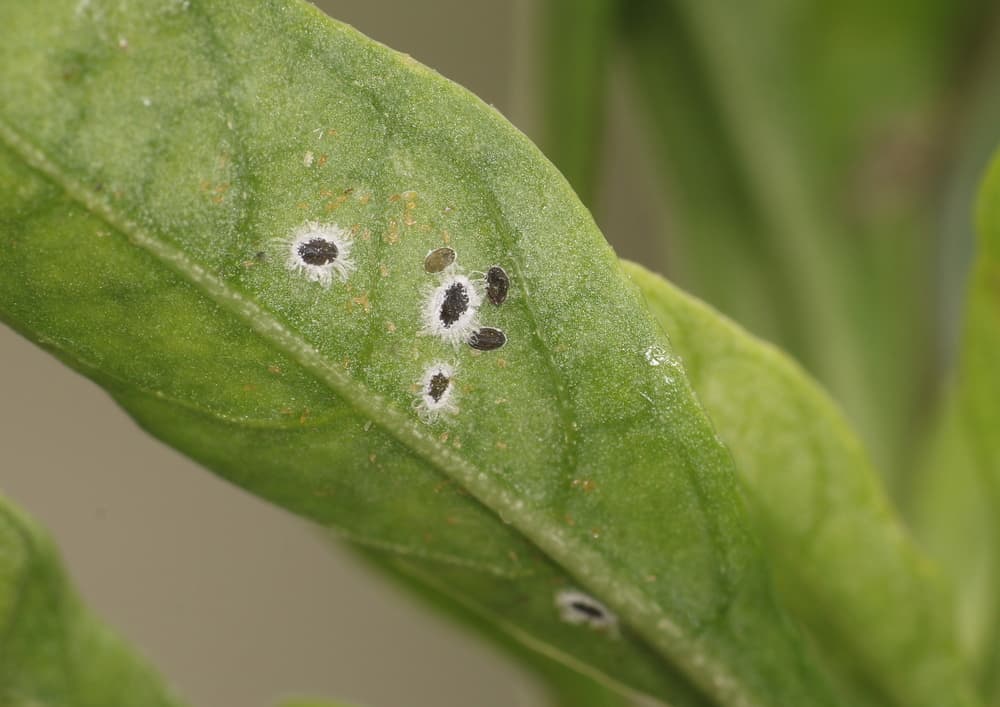
In the UK you need to watch out for aphids and whitefly, and also red spider mite.
Growing chillies in greenhouses increases the chances of the plants being attacked by these pests.
These can be reduced by using an insecticidal soap.
Background & Origins
C. anuum species were and are indigenous to Central America, and C. chinense species to the landmass we know as Venezuela, Guyana, French Guiana, and Suriname.2Capsicum annuum (bell pepper). (2022). CABI Compendium. https://doi.org/10.1079/cabicompendium.15784

The plants were domesticated in about 6000 BC in what we now know as Mexico, the very southern part of it.3Hirst, K. (2019, October 2). Chili Peppers – An American Domestication Story. ThoughtCo. Retrieved March 14, 2023, from https://www.thoughtco.com/chili-peppers-an-american-domestication-story-170336
Several thousand years later in the 1490s when Christopher Columbus and then the Spanish conquistadors made landfall in Central and South America, they observed that chillies were a staple part of the Aztec and Mayan diet.4What Did The Maya, Aztec and Incas Eat? (n.d.). DK Find Out! Retrieved March 14, 2023, from https://www.dkfindout.com/uk/history/mayans/what-did-maya-aztecs-and-incas-eat/
It was, in fact, Columbus who was responsible for introducing this New World fruit to Spain and Portugal near the end of the Fifteenth Century.5Chile Peppers. (n.d.). Silk Routes. Retrieved March 14, 2023, from https://iwp.uiowa.edu/silkroutes/chile-peppers
Within a couple of decades this spicy delicacy had established a foothold in Turkey and Italy.
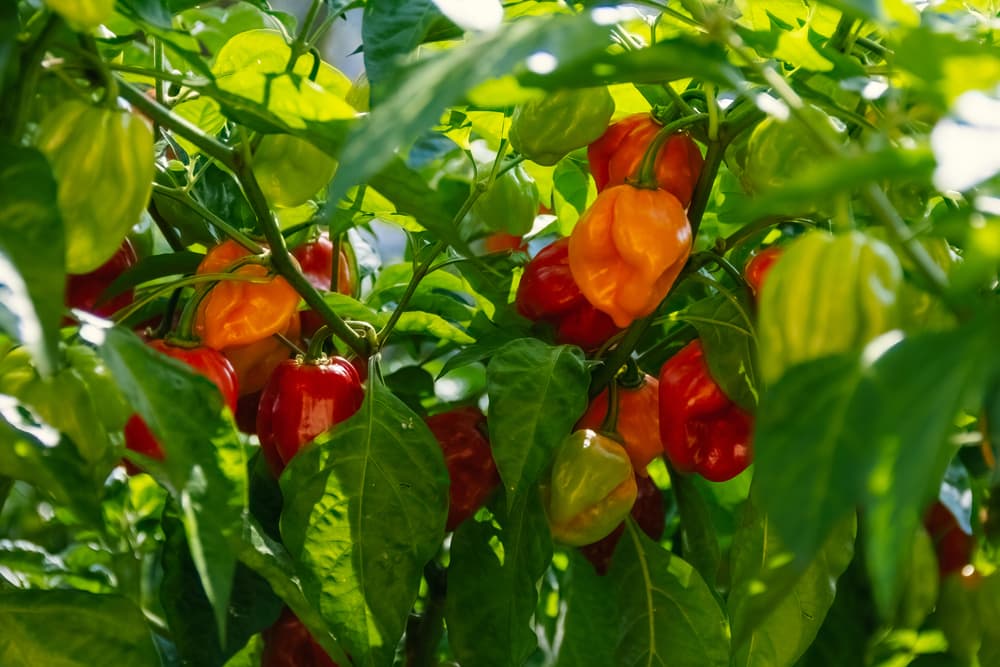
As such, believe it or not, until about 1500 only Central and South Americans had enjoyed this delicious spice!
Though we may associate chillies with Thailand, India, China, and Vietnam, those nations are latecomers to the Chilli Party.
Different species and varieties found their ways to these lands during the 1500s via the Silk Route and other trade routes, and these nations evidently adopted the fruit as their own, as seen from their respective cuisines.
In fact, India and China soon became among the world’s largest cultivators and exporters (of some or another species and varieties) of chillies, which they remain to this day.6Chilli Outlook. (2021, August). Agricultural Market Intelligence Centre. Retrieved March 14, 2023, from https://pjtsau.edu.in/files/AgriMkt/2021/August/chilli-August-2021.pdf
References
- 1Pepper, bell. (n.d.). Plant Village. Retrieved March 14, 2023, from https://plantvillage.psu.edu/topics/pepper-bell/infos
- 2Capsicum annuum (bell pepper). (2022). CABI Compendium. https://doi.org/10.1079/cabicompendium.15784
- 3Hirst, K. (2019, October 2). Chili Peppers – An American Domestication Story. ThoughtCo. Retrieved March 14, 2023, from https://www.thoughtco.com/chili-peppers-an-american-domestication-story-170336
- 4What Did The Maya, Aztec and Incas Eat? (n.d.). DK Find Out! Retrieved March 14, 2023, from https://www.dkfindout.com/uk/history/mayans/what-did-maya-aztecs-and-incas-eat/
- 5Chile Peppers. (n.d.). Silk Routes. Retrieved March 14, 2023, from https://iwp.uiowa.edu/silkroutes/chile-peppers
- 6Chilli Outlook. (2021, August). Agricultural Market Intelligence Centre. Retrieved March 14, 2023, from https://pjtsau.edu.in/files/AgriMkt/2021/August/chilli-August-2021.pdf

